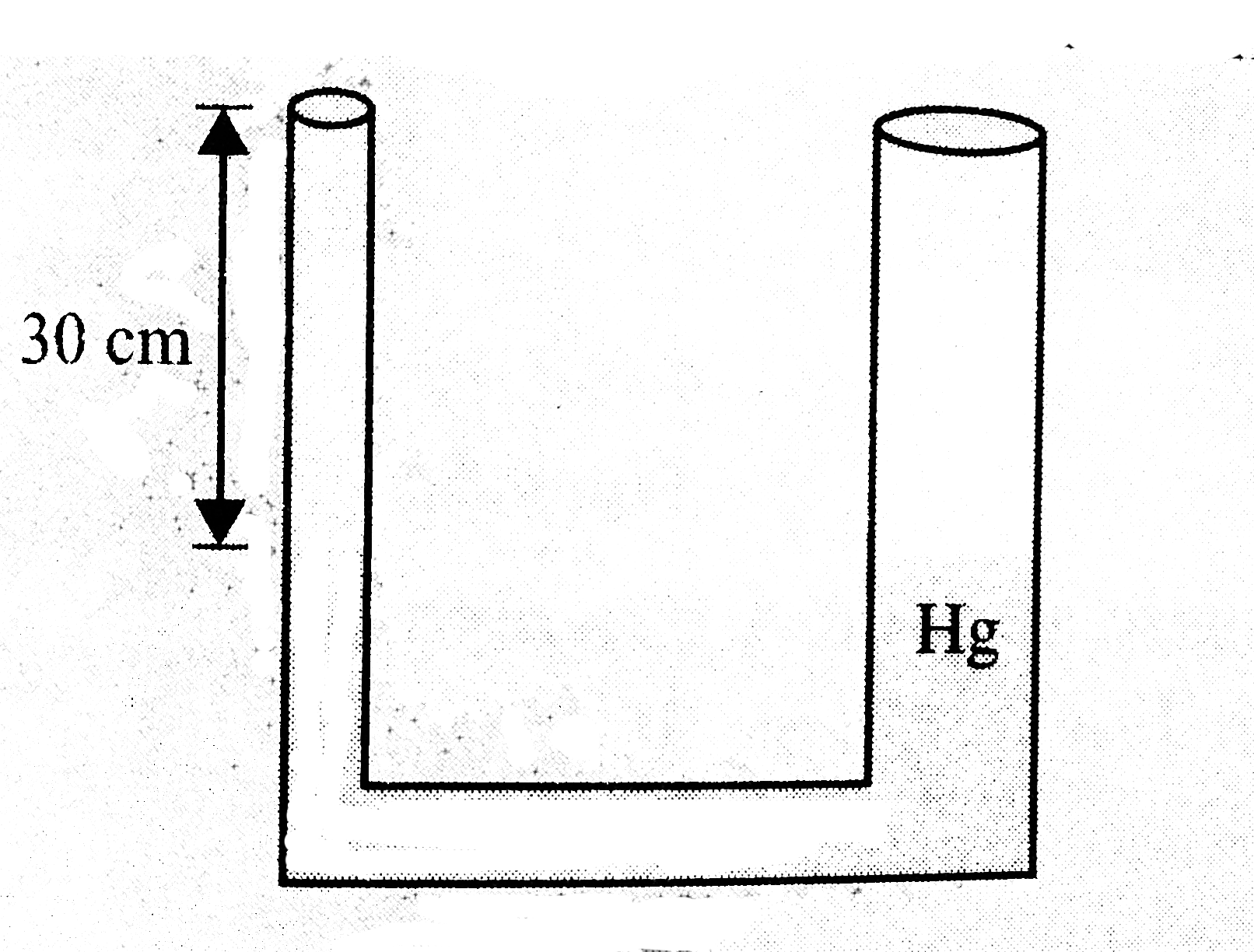In a mercury thermometer, the level of mercury rises when its bulb comes in contact with a hot object.What is the reason for this rise in the level of mercury ?
Step-by-Step Solution:
1. Understanding the Thermometer Structure: A mercury thermometer consists of a glass tube with a bulb at one end filled with mercury. The tube is narrow, allowing for precise measurements.
2. Heat Transfer: When the bulb of the thermometer comes into contact with a hot object, heat from the hot object is transferred to the mercury inside the bulb.
3. Expansion of Mercury: As the mercury absorbs heat, its temperature increases. According to the principles of thermal expansion, when a substance is heated, it tends to expand.
4. Rise in Mercury Level: The expansion of mercury causes it to occupy more space. Since the glass tube is narrow, the only way for the mercury to expand is to rise up the tube. This results in an increase in the level of mercury in the capillary tube.
5. Conclusion: Therefore, the rise in the level of mercury in a thermometer when it comes into contact with a hot object is due to the thermal expansion of mercury caused by the heat transfer from the hot object.
---
Topper's Solved these Questions
- HEATBook:NCERT EXEMPLARChapter:HEATExercise:SHORT ANSWER QUESTIONS
Explore 11 Videos
- HEATBook:NCERT EXEMPLARChapter:HEATExercise:SHORT ANSWER QUESTIONS
Explore 11 Videos
- ELECTRIC CURRENT AND ITS EFFECTS Book:NCERT EXEMPLARChapter:ELECTRIC CURRENT AND ITS EFFECTS Exercise:LONG ANSWER QUESTIONS
Explore 7 Videos
- LIGHT Book:NCERT EXEMPLARChapter:LIGHT Exercise:LONG ANSWER QUESTIONS
Explore 3 Videos
Similar Questions
What is the name of those thermometers which do not use mercury ?
View SolutionA U-tube in which the cross-sectional area of the limb on the left is one-third of the limb on the right contains mercury (density 13.6g/cm3). The level of mercury in the narrow limb extends to a distance of 30cm from the upper end of the tube. What will be the rise in the level of mercury in the right limb, if the left limb is filled to the top with water (neglect surface tension effects)?

View Solution
Knowledge Check
Mercury sticks to the surface of the glass when it comes in contact with
AHg2OBHNO3CO3DgreasesThe compound formed when Mercury comes in contact with ozone is
AHgOBHg2OCH2ODHgO3What is the product formed when ozone reacts with mercury?
AHgOBHg2O2CHg2ODHgO2
In a mercury barometer, at sea level, the normal pressure of the air (one atmosphere) acting on the mercury in the dish supports a 76 cm column of mercury in a closed tube. If you go up in the air, until the density has fallen to half its sea level value, what height of mercury column would you expect?
View SolutionIn a constant volume gas thermometer, the pressure of the working gas is measured by the differenced in the levels of mercury in the two arms of a U-tube connected to the gas at one end. When the bulb is placed at the room temperature 27.00C, the mercury column in the arm open to atmosphere stands 5.00cm above the level of mercury in the other arm. When the bulb is placed in a hot liquid, the difference of mercury levels becomes 45..0Cm. Calculate the temperature of the liquid. (Atmospheric pressure =75.0cm of mercury).
View SolutionA glass tube sealed at one end and containing a quantity of air is immersed in mercury until the sealed end is 10 cm from the surface of mercury. At 0∘C the level of mercury in the tube is 5 cm above the level of mercury in the vessel. The length of the tube is 15 cm. To what temperature should the air in the tube be raised as to fill the tube completely? The atmospheric pressure is 75 cm of Hg. Neglect any change in the level of mercury in the vessel.
View SolutionAn open capillary tube is lowered in vessel with mercury. The difference between the levels of the mecury in the vessel and in the capillary tube △h=4.6mm. What is the radius of curvature of the mercury meniscus in the capillary tube? Surface tension of mercury is 0.46N/m, density of mercury is 13.6gm/cc.
View SolutionWhen mercury is in contact with glass m then the surface of mercury is
View Solution